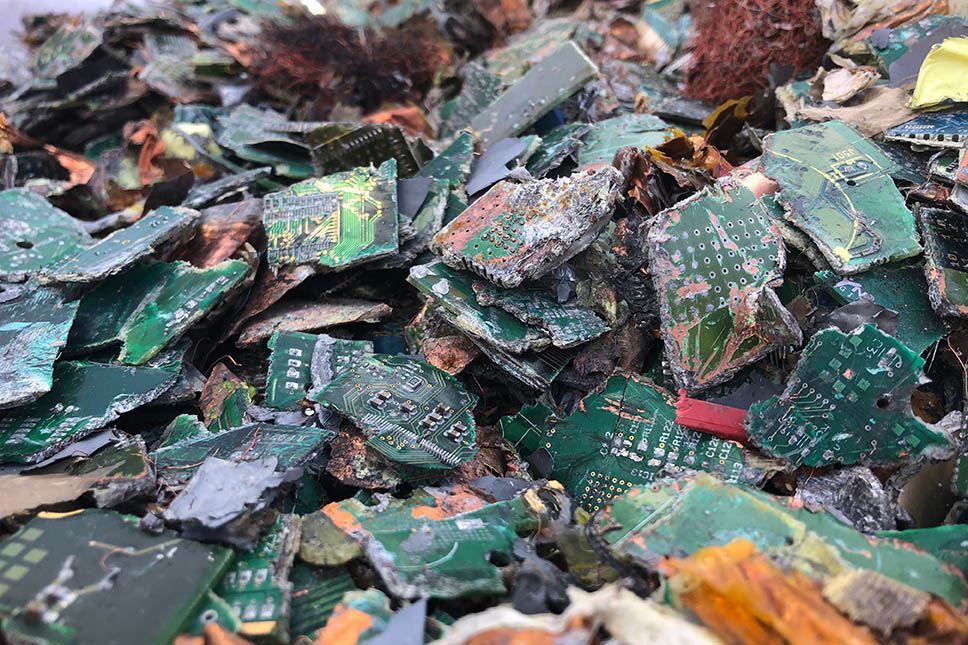
Researchers found unique interactions between graphene and gold ions yield exceptional selectivity in extraction from e-scrap. | Dominic Warren/Shutterstock
A cutting-edge method of recovering gold from solutions works without energy inputs, lab testing found.
The process works by putting graphene into a solution containing traces of gold. Within a few minutes, the gold is attracted to the graphene sheets, with no other chemicals or energy input. The graphene is then burned off to recover the gold.
The research, from The University of Manchester, Tsinghua University in China and the Chinese Academy of Sciences, was published in the journal Nature Communications.
Activated carbon, which is widely used for gold extraction, has low extraction capacity, poor selectivity and high energy and resource intensity compared to this method, the paper noted.
“This apparent magic is essentially a simple electrochemical process,” Yang Su, co-author of the study, said in a press release. “Unique interactions between graphene and gold ions drive the process and also yield exceptional selectivity. Only gold is extracted with no other ions or salts.”
In the experiments, 1 gram of graphene could extract about 2 grams of gold, and the process can reclaim close to 100% of gold from electronic waste, Su said. Graphene costs less than $0.10 per gram, while gold is worth about $70 per gram.
“Moreover, gold extraction can be done selectively, without adsorption of the other 14 elements normally present in e-waste,” the paper stated. “This, in turn, enables the recycling of copper, the second most valuable metal in e-waste.”
More stories about metals
- Australian metals company rebrands, builds Texas plant
- Project brings rare earth recovery into e-scrap facility
- Company debuts battery-containing device shredder